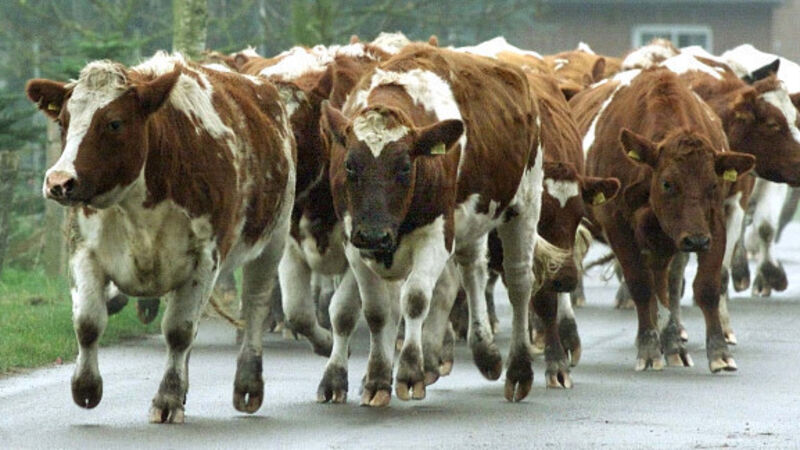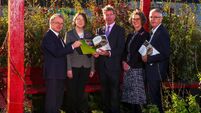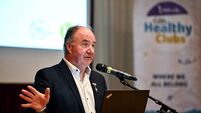Bord Bia report shows cattle farms missing out on export boom

Yesterday’s Export Performance and Prospects 2016-2017 report from the food board showed food and drink shipments overseas exceeding €11 billion for the first time ever, having jumped 41% since 2010.
But the report included a warning that higher Irish cattle supplies in 2017, and currency volatility, will create price challenges for the 100,000 or so farms involved in beef.
Bord Bia said a decrease of almost 58,000 head in live cattle exports in 2015, and a rise of over 133,000 head in calf registrations, point to a significant increase in finished cattle supplies in 2017.
This could help exporters by boosting volumes sent overseas by 6%.
But already low cattle farm profits could be depressed further, by the increased supply at export plants, most of which is expected in the early part of 2017.
Farmers may depend on a cattle price boost from further growth in beef exports to non-EU markets, which Bord Bia chiefs hope will provide additional options for exporters.
The food board also anticipates that 2017 should see some recovery in live cattle shipments, following two years of decline.
“Improving economic conditions in traditional markets such as Spain should see some improved demand for beef and ultimately further growth in live exports, particularly of calves and weanlings,” according to Bord Bia.
“Following on from gaining market access to Turkey during the second half of 2016, there was a renewal of trade to Libya towards the end of the year, with market access also granted to Egypt and Algeria.
“These developments should lead to a rise in trade to non-EU markets for yearlings and stores in 2017.”
However, at last week’s Bord Bia Meat Marketing Seminar, Rupert Claxton of the GIRA international research consultancy specialising in the meat and dairy sectors warned that Turkey’s imports of live cattle from the EU are not sustainable in the long term.
And Bord Bia sources have pointed out that demand for Irish and EU livestock from markets in North Africa and the Middle East will depend on the political environment and our relative cost competitiveness.
On the plus side, steady demand for calves for veal production in most markets is anticipated.
In contrast, the country’s other main farming sector behind the impressive export performance, the 18,000 dairy farmers, can look forward to what Bord Bia says are reasonably positive prospects for Irish dairy exports in 2017.
“Recovering global dairy prices and increased demand from key global dairy importers on the back of anticipated stronger oil prices should help exports,” said the food board.










